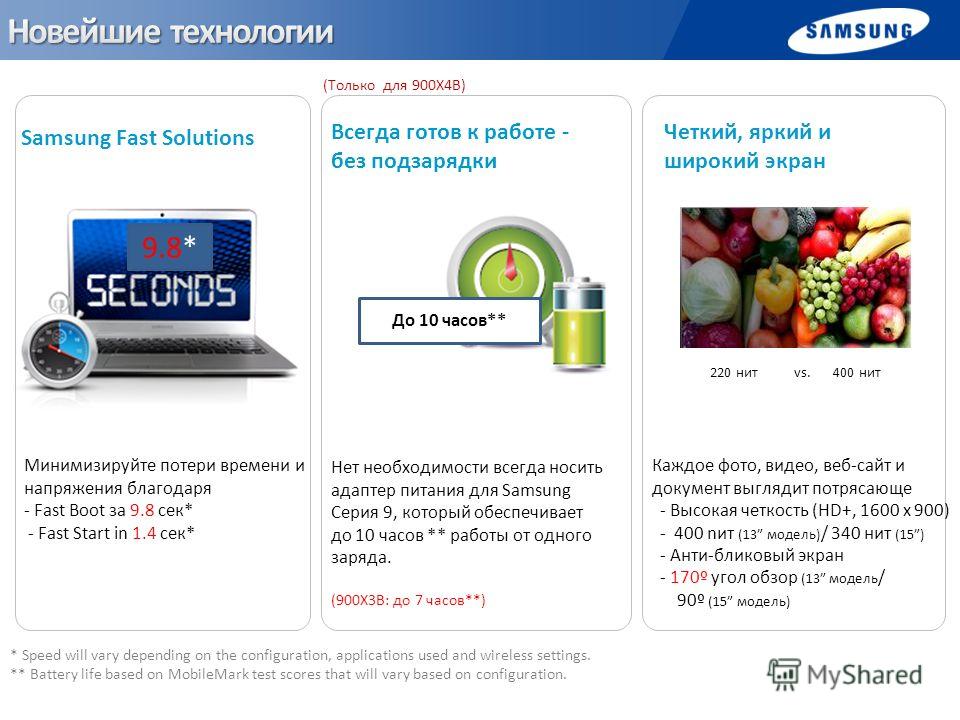

Credit Stuart Goldenberg This is a story of truth, greed and the American Way. Oh, and also laptop battery-life benchmarks.
Two things about battery-life measurements for laptops: First, they usually bear little relationship to reality. I don’t know about you, but my “five-hour” battery often dies halfway between J.F.K. Second, laptop ads always use that essential tool of wiggle-roomers everywhere, “Up to.” As in, “Up to five hours.” Folks, “up to” is one of the greatest cop-outs in the English language.
Rank Version Date System Type System CPU Memory Disk Video Video Resolution OS Battery Life DVD Productivity Reader Wireless CLK/cache Power Management Modified.
You know what? I’ve got a laptop that gets “up to” 1,000 hours on a charge! Because “up to” just means “something below this number.” Well, so what, right? Why pick on laptop makers?
Every industry does it, right? In 2003, the digital camera industry had a similar problem. Every company was advertising its cameras’ battery life in overblown terms. Each had its own testing protocol, none representative of real life. Pretty soon, consumers realized that the battery statistics were basically meaningless.
It developed a standardized battery-life test. You take one photo every 30 seconds — half with the flash on, half with the flash off. You zoom all the way in or all the way out before every shot. You leave the screen on all the time. After every 10 shots, you turn off the camera for awhile. In other words, you test the camera pretty much the way people would use it in the real world, erring on the side of conservatism.
Nowadays, all cameras are tested and advertised this way. And CIPA ratings now match up with reality. But laptops are more complicated, right?
Many more factors determine battery life: what you’re doing, how bright the screen is, what wireless features are turned on, and so on. Yet other industries have faced this problem, too. Cellphones, for example: The battery dies a lot faster when you’re making calls than when you’re just carrying the thing in your pocket. Cars: You generally get much better mileage on the highway than in the city. Even iPods: You get much better battery life when you’re playing music rather than video.
So their manufacturers do the only logical thing — they give you the worst-case/best-case numbers. When you shop for a cellphone, you see, “4 hours talk time/300 hours standby.” When you shop for a car, you see “26 m.p.g. City/32 highway.” When looking over an iPod, you see “24 hours of music playback/6 hours of video.” And everybody’s happy. Advertisement But with laptops, what do we get? “Up to five hours.” This is important, because battery life has become a huge selling point. People have finally managed to unlearn the Megahertz Myth (hallelujah!), so they’re looking at battery life as a crucial buying factor. Why doesn’t the computer industry invent a standard battery test?
Actually, they have. Those “up to” numbers are the results of a test suite called MobileMark 2007. There are a few problems with the MobileMark test. One of them is the identity of its inventor. It’s Bapco (Business Application Performance Corporation), a trade group led by Intel and composed primarily of laptop and chip manufacturers.
Let’s see: a benchmark developed by precisely the companies who profit if battery life looks good.  Isn’t that like putting the foxes in charge of henhouse inspections? Another problem: Unlike CIPA’s camera tests, the MobileMark test protocol doesn’t reflect real-world use. Consider, for example, the screen.
Isn’t that like putting the foxes in charge of henhouse inspections? Another problem: Unlike CIPA’s camera tests, the MobileMark test protocol doesn’t reflect real-world use. Consider, for example, the screen.
It’s the most power-hungry component of a laptop, so specifying how bright it is during your test is extremely important. Well, the MobileMark test specifies that you have the screen set to 60 nits (a brightness measurement). Fish frenzy. Not to nitpick, but at full brightness, the screens on modern laptops put out 250 to 300 nits. The MobileMark test, in other words, specifies setting the screen at a fraction of full brightness — a setting that few people use in the real world. ( Advanced Micro Devices says that 60 nits is about 20 percent brightness on most laptops. Intel says it’s closer to 50 percent. Either way, it’s too low.).